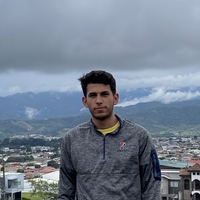Using Non-invasive Brain Stimulation in the Treatment of Chronic Post-stroke Aphasia: a Preliminary Analysis of TMS as a Supplement to Constraint-Induced Language Therapy
Under the guidance of Dr. Roy H. Hamilton, I was given the opportunity to be part of a phase II clinical trial in the Laboratory for Cognition and Neural Stimulation at Penn Medicine. This study is part of an on-going clinical trial that evaluates the efficacy of Transcranial Magnetic Stimulation (TMS) as a supplementary tool to Constraint-Induced Language Therapy (CILT) in the treatment of chronic post-stroke aphasia.
Aphasia is an acquired loss in language abilities that often follows after a stroke or head injury, leaving many patients with speech and comprehension difficulties. In this study, aphasic patients received 1200 pulses of 1 Hz stimulation at 90% motor threshold at the right inferior pars triangular for 20 minutes each session over the course of 2 weeks (10 sessions, Monday-Friday). After each TMS session, patients were given 60-90 minutes of CILT therapy. TMS may be useful in the treatment of post-stroke aphasia because stimulation to the right inferior frontal gyrus causes suppression of excitability, which decreases cross-hemisphere inhibition to the language areas in the left hemisphere. In this double-blind, sham-controlled study, 9 patients were randomized in a 2:1 active TMS+CILT to sham TMS+CILT ratio. Western Aphasia Battery-Aphasia Quotient scores at baseline, 3 months post-treatment, and 6 months post-treatment were analyzed as a primary outcome measure to determine whether patients had significant aphasia improvements (>5 increase in WAB-AQ).
Over the course of 3 months, my work consisted of administering tDCS (a different type of non-invasive brain stimulation) to patients with primary progressive aphasia and being trained to score and administer the Western Aphasia Battery (WAB) as well as various other language tests that are given to patients. After becoming comfortable scoring the WAB, I encoded patient records from the TMS study into a Research Electronic Data Capture (REDCap) secure database and began to score baseline, 3 month follow-up, and 6 month follow-up WAB tests for various patients. Once I became unblinded, I began to analyze preliminary data and qualify whether patients had significantly relevant aphasia improvements as a result of CILT alone or TMS+CILT.
Thank you for taking interest my research and to CURF and Dr. Hamilton for giving me this opportunity!

Comments
Very interesting stuff! I am…
Very interesting stuff! I am curious though, can medication help/change the way the brain responds to this type of stimulation?
Very cool!
Hi Jeff! This might be the most detailed poster I have ever seen but great work! What would you say was the most challenging part of your clinical research work with patients?